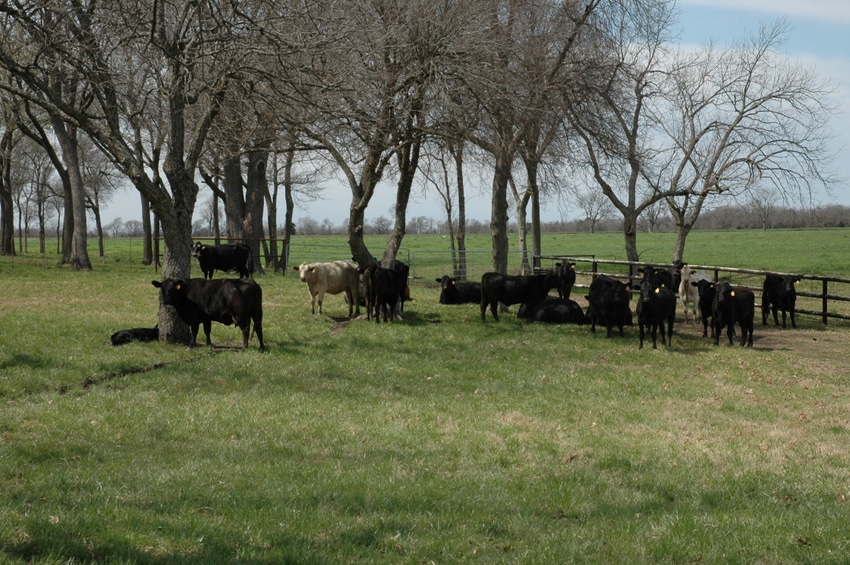
Forages need a rest following the devastating drought of 2011. And placing more cattle on pasture and rangeland than vulnerable plants can manage will delay or prevent recovery, says a Texas AgriLife Extension forage specialist.
Larry Redmon says plants were so stunted last year that root systems are extremely limited. “It’s like a new stand,” he says. “So I would not go back in with a full stocking rate.”
He says rangeland could recover this year if adequate rainfall continues and producers follow prescribed fertility recommendations on bermudagrass pastures. Neither of those possibilities is assured, however.
Redmon says climatologists predict several more years of drought in what they see as a 25-year dry weather cycle. And high fertilizer prices may limit how much fertilizer cattlemen can afford.
He also cautions producers not to be overawed by the green-up on pastures following good winter and spring rainfall. “A lot of the green is weed growth,” he says.
A familiar pattern for cattle producers, he says, is to chase rainfall with stocking rates and buying and selling accordingly. Unfortunately, that typically means they buy when cattle prices are high and sell when there is a glut in the market and prices fall.
It makes more sense, he says, to follow a pattern of under stocking. “Stock at the drought rate, about 70 percent of what the estimated stocking rate would be,” he says. “That system reduces risk during drought and keeps producers out of the cycle of buying and selling.” They develop a more consistent stocking rate and marketing strategy.
The potential problem of producing excess grass in years with adequate moisture is an easy problem to solve, he says. Hay production or stocker cattle can take care of too much grass.
“We can handle too much grass,” he says. “But there is no way to handle no grass.”
He says under stocking reduces risks, and he relates a story about a large ranch that went through the 1950s drought cycle and then tried to recover by building the herd back to pre-drought levels. He says their loan was called in and the owners had to sell out.
Another large operation went through drought stress, culled to get to a reasonable stocking rate and maintained that rate “for 50 years following the drought. They’re still in business,” Redmon says. “You can’t feed your way out of a drought.”
Cattlemen who completely sold out last year likely will come back slowly, he says.
But some who found it too expensive to bring in feed for their herds moved their cattle to forage in other states. Many of those likely will stay on their new sites for several years, he says. Some may not return to Texas.
He says some producers who did not want to lose herd genetics they had built for several decades moved cattle to other states. Some of those may rebuild Texas herds with offspring of the animals they moved.
“But Texas cattlemen need to be cautious about restocking. I recommend the safest approach they can take. And now it’s too soon to start thinking about restocking to any great extent.”
He qualifies that statement by saying that if a producer who had completely de-stocked finds some good prices for cows and has good forage available, he might want to start rebuilding—but cautiously.
He says the high cost of fertilizer, “back up to where it was in 2008 in many cases,” also may be a factor in restoring pastures and rebuilding herds. He also says that if bermudagrass is not fertilized the stand thins and dies.
“Put a pencil to it and look at cattle prices and what you can afford to do with a cow/calf operation.”
He also recommends looking at forages other than bermudagrass. Options might not produce as much but also will not cost as much to grow. Less forage production will mean reduced herd size, too.
“But more is not always better,” Redmon says. “Profit margin might be better with fewer cows.”
He says Texas has fewer and fewer cattlemen every year. “Older producers are getting out and property is being sold and bought for other uses.”
The cow herd nationally, he says, is moving to the central part of the country, away from the coasts where land values preclude animal agriculture. That factor, plus the high cost of getting into the cattle business or rebuilding a herd following reducing numbers or completely de-stocking, likely will keep herd numbers low “for the foreseeable future,” he says.
About the Author(s)
You May Also Like






